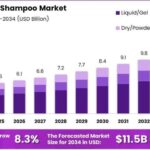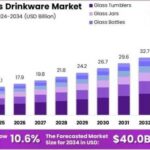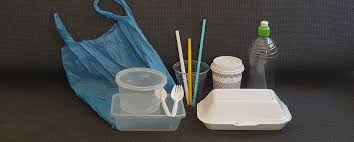Introduction
Definition and Scope of Single Use Packaging
Single use packaging refers to disposable materials designed for a one-time use before being discarded or recycled. Predominantly used for food, beverages, medical supplies, and consumer goods, this packaging type epitomizes convenience, hygiene, and cost-effectiveness. Its pervasiveness spans from coffee cups and plastic cutlery to pharmaceutical blister packs and e-commerce mailers.
For more info please visit: https://market.us/report/single-use-packaging-market/
Historical Perspective and Market Emergence
The genesis of single use packaging traces back to the post-World War II era, a time marked by industrial boom and a rising consumer culture. Plastics, once a marvel of modern science, became the cornerstone of packaging innovation. The rise of supermarkets and fast food chains in the mid-20th century further catalyzed the demand for disposable packaging formats, cementing its role in global commerce.
Current Market Landscape
Global Market Size and Growth Trends
As of 2025, the global single use packaging market is valued at over $300 billion, with projections suggesting steady CAGR growth over the next decade. Rapid urbanization, burgeoning e-commerce ecosystems, and heightened demand for ready-to-eat consumables continue to buoy market expansion.
Key Industries Driving Demand
The food and beverage industry remains the principal consumer, followed closely by healthcare and personal care sectors. Pharmaceutical companies rely heavily on sterile single-use vials, syringes, and blister packaging to ensure product integrity. In parallel, cosmetics brands utilize sachets and pouches to support sample distribution and one-time applications.
Regional Market Dynamics
Asia-Pacific dominates the market, driven by population density, manufacturing prowess, and rising disposable incomes. North America remains innovation-centric, fostering startups and sustainability-focused R&D. Europe, with its stringent environmental directives, is progressively transitioning toward recyclable and bio-based alternatives, impacting market configuration.
Materials and Innovation
Predominant Materials Used in Single Use Packaging
Petroleum-based plastics such as polyethylene (PE), polypropylene (PP), and polystyrene (PS) are still ubiquitous due to their low cost and versatility. Aluminum foil and paperboard are also popular in food and pharmaceutical applications. However, their environmental ramifications have become increasingly contentious.
Advances in Biodegradable and Compostable Options
In response to ecological scrutiny, innovators are developing starch-based polymers, polylactic acid (PLA), and polyhydroxyalkanoates (PHA). These materials, derived from renewable sources, exhibit biodegradability under industrial composting conditions. Notably, packaging made from mycelium the root structure of mushrooms has emerged as a fascinating bio-alternative, combining formability with rapid decomposition.
Smart Packaging and Technological Integration
Beyond materials, the industry is witnessing the rise of “smart” packaging solutions embedded with sensors, RFID tags, and freshness indicators. These technologies offer traceability, extend shelf life, and enhance consumer interaction. For instance, temperature-sensitive inks can inform customers if perishable items have been exposed to unsafe conditions.
Environmental and Regulatory Pressures
Environmental Impact of Single Use Packaging
Landfills brimming with plastic detritus and microplastics infiltrating oceans illustrate the darker side of single use packaging. These materials can persist for centuries, leaching toxins and disrupting ecosystems. The carbon footprint associated with production, transportation, and disposal also contributes significantly to global emissions.
Regulatory Measures and Policy Shifts
Governments worldwide are responding with legislation aimed at curbing single use plastics. The European Union’s Single-Use Plastics Directive and bans in countries like India and Kenya exemplify the mounting regulatory clampdown. Extended producer responsibility (EPR) schemes are increasingly holding manufacturers accountable for post-consumer waste.
Corporate Sustainability Mandates
Multinational corporations are under pressure from stakeholders to reform their packaging strategies. Unilever, Nestlé, and Coca-Cola have pledged to achieve 100% recyclable, reusable, or compostable packaging within the next decade. Some brands are even piloting reusable container programs and incentivized return systems to mitigate waste.
For more info please visit: https://market.us/report/single-use-packaging-market/
Future Outlook
Market Forecasts and Emerging Trends
The future of single use packaging will be defined by a balancing act between convenience and conscience. Market analysts predict a shift toward hybrid packaging—designs that combine recyclability with biodegradability. The growth of localized production and on-demand manufacturing may also reshape supply chains.
Challenges and Opportunities Ahead
The sector faces formidable obstacles: inconsistent recycling infrastructure, greenwashing practices, and material performance trade-offs. Yet, these challenges are also fertile ground for innovation. Startups focusing on closed-loop solutions and decentralized composting infrastructure are attracting venture capital interest.
Evolving Consumer Behavior and Expectations
Today’s consumers are more informed, ethically aware, and vocal. They demand transparency, minimalism, and ecological alignment in packaging. As such, brands that fail to adapt risk not just regulatory penalties, but reputational erosion. The zeitgeist is clear: sustainability is no longer a luxury it’s a baseline expectation.
Conclusion
The single use packaging market stands at an inflection point. While its ubiquity and utility are undeniable, so too are its environmental costs. As innovation, regulation, and consumer consciousness converge, the industry must reimagine its future—one that harmonizes practicality with planetary stewardship.
- Disposable Yet Indispensable: Inside the Single Use Packaging Industry
- Explore the evolving landscape of the Single Use Packaging Market—from rising consumer demand and e-commerce growth to regulatory pressures and sustainability challenges. This in-depth analysis unpacks key industry trends, innovations, and the future outlook shaping disposable packaging worldwide.
- #SingleUsePackaging #SustainablePackaging #EcoFriendlySolutions #PackagingInnovation #CircularEconomy #PlasticWaste #BiodegradablePackaging #GreenPackaging #CompostableMaterials #PackagingTrends #ZeroWaste #ConsumerGoodsPackaging #EnvironmentalSustainability #EcommercePackaging #RegenerativeDesign
Related posts:
 Easy EMI Card: Your Go-To Solution for Easy Monthly Payments
Easy EMI Card: Your Go-To Solution for Easy Monthly Payments
 Why the World Is Going Sulfate-Free—One Shampoo Bottle at a Time
Why the World Is Going Sulfate-Free—One Shampoo Bottle at a Time
 The mystery to great connections? Acknowledge family and companions for who they truly are
The mystery to great connections? Acknowledge family and companions for who they truly are
 Alpaca Apparel Market on the Rise: Sustainability Meets Sophistication
Alpaca Apparel Market on the Rise: Sustainability Meets Sophistication
 Designer Drinkware: When Art, Function, and Prestige Collide
Designer Drinkware: When Art, Function, and Prestige Collide
 Mitolyn Review: Mitochondrial Energy Support for Brain, Body & Longevity
Mitolyn Review: Mitochondrial Energy Support for Brain, Body & Longevity
 Get Professional Trading Success Through Advanced Stock Market Classes Offered Only By ICFM India
Get Professional Trading Success Through Advanced Stock Market Classes Offered Only By ICFM India
 Masa Estimating in the USA: Precision, Insights, Trust and Reliability
Masa Estimating in the USA: Precision, Insights, Trust and Reliability





